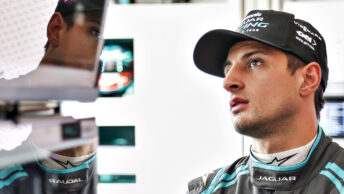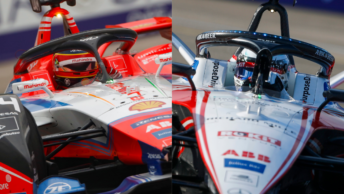Fast approaching the home stretch of a grueling nine day run at Berlin’s Tempelhof Airport to finish out a disrupted 2019-20 season, Formula E teams up and down the pitlane are feeling the heat – literally.
With four races in the books and two more to go, team members have been contending with soaring ambient temperatures in the mid 30s Celsius and long 16-17 hour long days, all while having to follow stringent regulations in Formula E’s “Return to Racing” guidelines amidst the COVID-19 pandemic to ensure everyone’s safety and well-being.

For these final races at Berlin’s to proceed, the total number of on-site personnel has been drastically limited to under 1,000 people in order to meet “minimum operational standards” to hold an event of this scale. Those attending are also segregated into their own “bubbles” and further sorted into clusters. This is done to limit the scope of potential infection should an outbreak occur and allow for quicker contact tracing.
All non-essential staff have been left behind or are working remotely from Berlin hotels and a stringent accreditation process meant teams can only bring a skeleton crew of 22 members per team on-site, including drivers and team principals.
The typical Formula E race day schedule is already pretty packed. On average, teams would be lucky to get more than two hours time between each track session, with the tightest turnaround usually between the morning’s free practice and group qualifying. If anything calamitous were to happen then, drivers risk being relegated to the back of the field or worse, not taking part in the race at all.

Jaguar Racing found this out the hard way on Wednesday during the first free practice session, when a software issue forced the team to replace the motor and the battery on James Calado’s car as a precaution. This meant he had to forfeit all of free practice running that day.
The lack of running had a knock-on effect on Calado’s qualifying performance where he started from last on the grid. Calado would eventually recover and finish in 15th position.
“It’s incredibly difficult to host events like this with coronavirus happening all around the world,” said team director James Barclay to Inside Electric. “For the team operationally it’s very very tight to be honest, especially if you have a major issue like we had on Wednesday.”
Barclay said that the reduced numbers allowed at the track are something that need to be looked at closely for the future and serve a a dress rehearsal for next season, when the number of staff allowed inside the garage will be reduced from 20 to 17 as part of Formula E’s sweeping cost-cutting measures in response to the ongoing pandemic.

“I think the reduced numbers though are obviously something which we know we are going to for next season,” explained Barlcay. “If you need to do major work there really is not a lot of people on the ground, so it’s very challenging to be honest. It’s something to be looked at as we approach the future in terms of reduced staff levels. It becomes more difficult when we have major issues.”
“One of the things we are seeing is we have an opportunity to kind of almost try it here, and I think what it is showing is that if you do have challenges and you are quite thin on the ground, then that’s something we need to keep close, keep an eye on because obviously the future of the championship is got to make sure we have cars on the grid, performing well and close racing.
“So a good test case, something we should look at closely. But I do think it has its potential challenges being so marginal in staff numbers.”

Porsche Formula E had to contend with its own major rebuild after Saturday’s E-Prix when Neel Jani was involved in a crash early in the race with Sergio Sette-Camara. Jani was unhurt but the car’s tub was damaged, necessitating a replacement since it was a safety critical component.
The timing could not have been worse for Porsche because it was right in the middle of a double header round. With FP3 scheduled earlier in the morning the following Sunday, the team had to scramble and do the bulk of the repairs on Saturday evening to meet the tight turnaround time while adhering to the mandatory 1am curfew, when all members have to vacate the circuit. The hard work did pay off and Jani was able to head out as scheduled the following morning.
“Definitely it’s hard on everybody” said Porsche Formula E’s head of operations Amiel Lindsey. “We are in massively hot ambient conditions. [We] try and get the guys to be in as early as possible and focus on the work that needs to be done.
“We came here well prepared. We’ve got a lot of parts with us to try and minimize the downtime and get the cars at night time as prepared as quick as possible, to get everybody – as good as possible for the complete event.”
Envision Virgin Racing team principal Sylvain Filippi remarked the frenetic pace of the 6 race, 9 day format as something akin to pre-season testing.
“It reminds me of testing a little bit sometimes,” said Filippi. “Testing can be really brutal – a lot of on track action and a lot of data to analyse. [Here] it’s been the same.
“It’s funny – It’s motorsport – I’m actually telling my team to try and get some rest because I want them to be rested! But they won’t necessarily hear it.”





